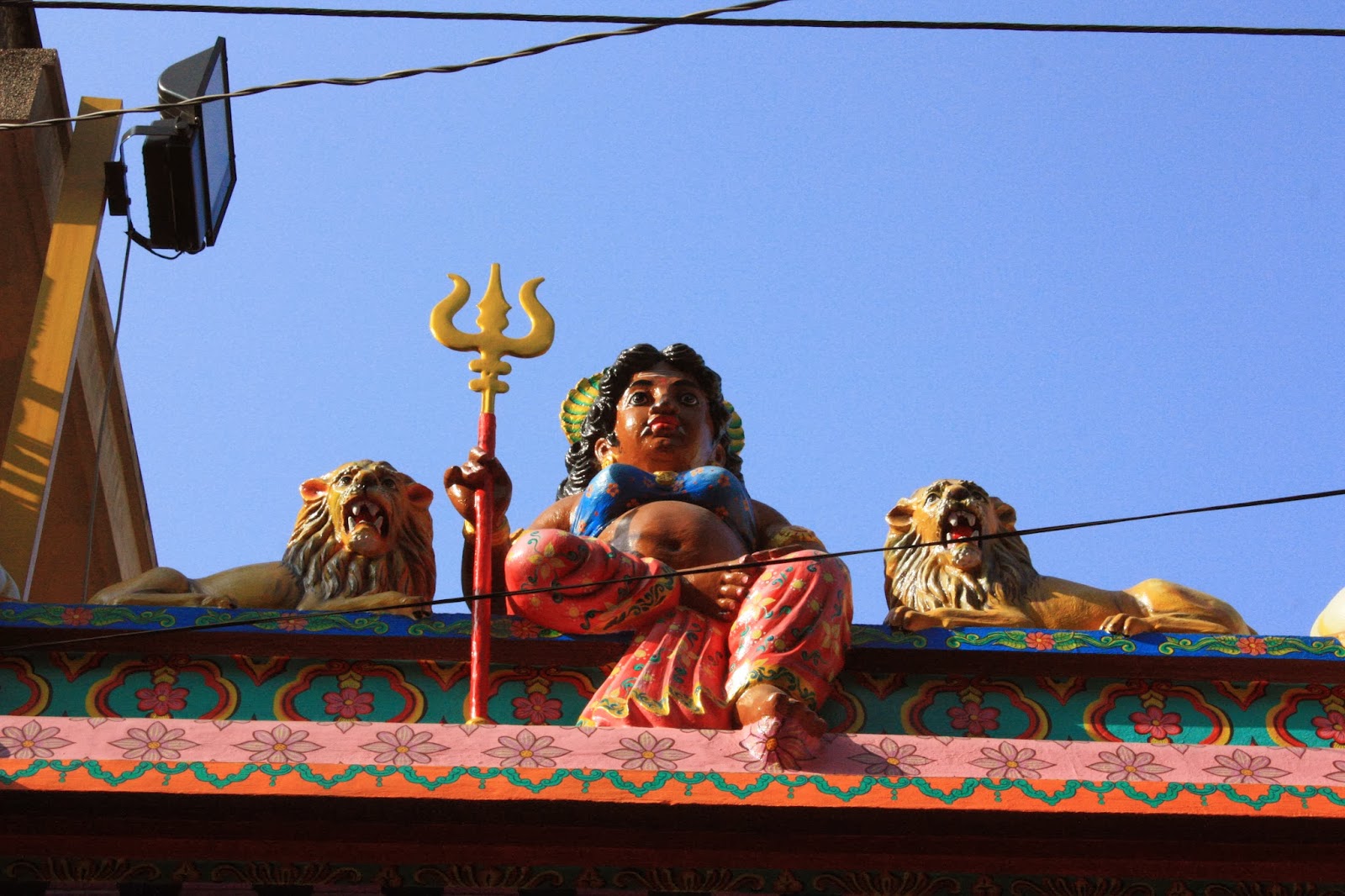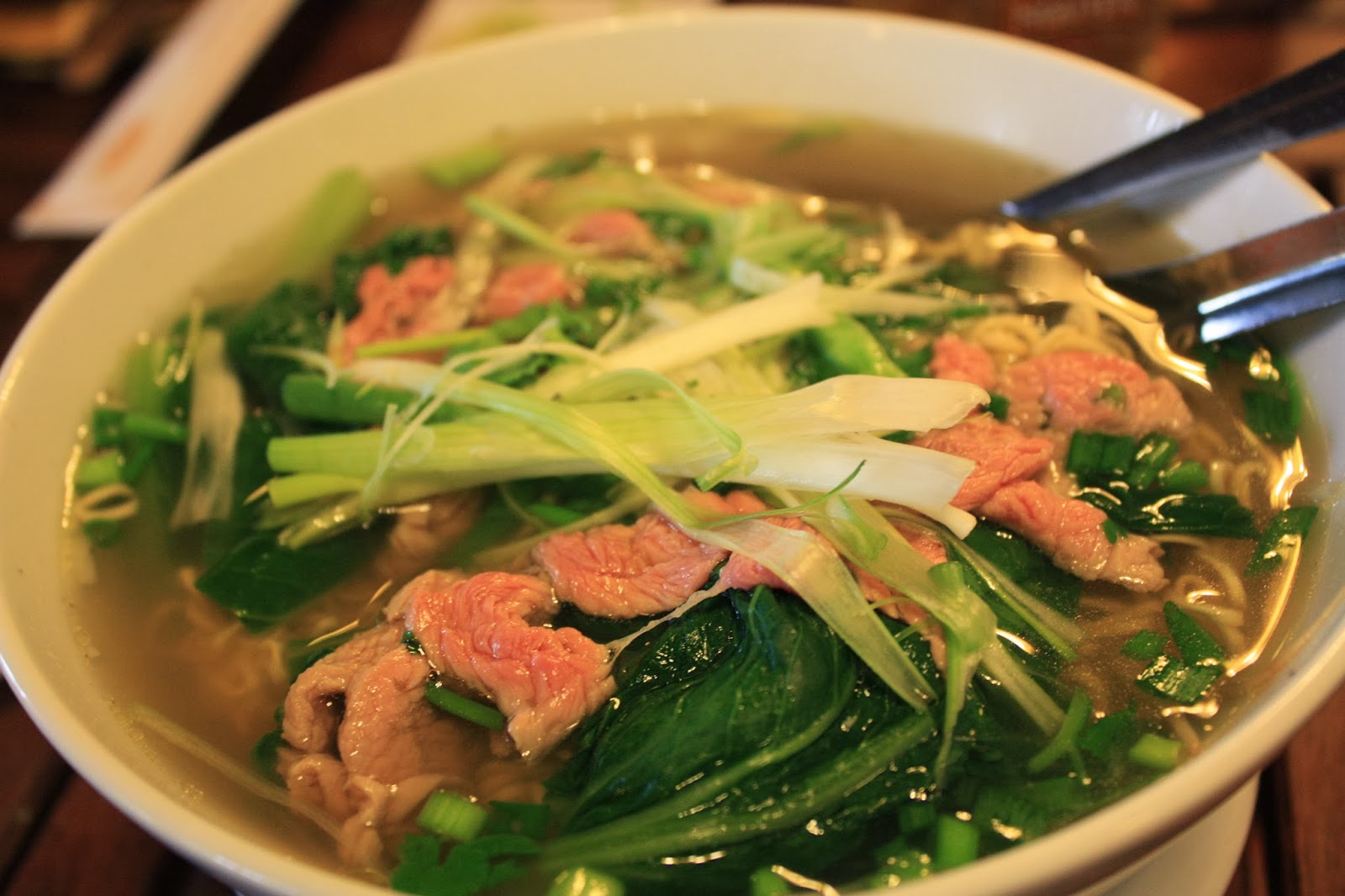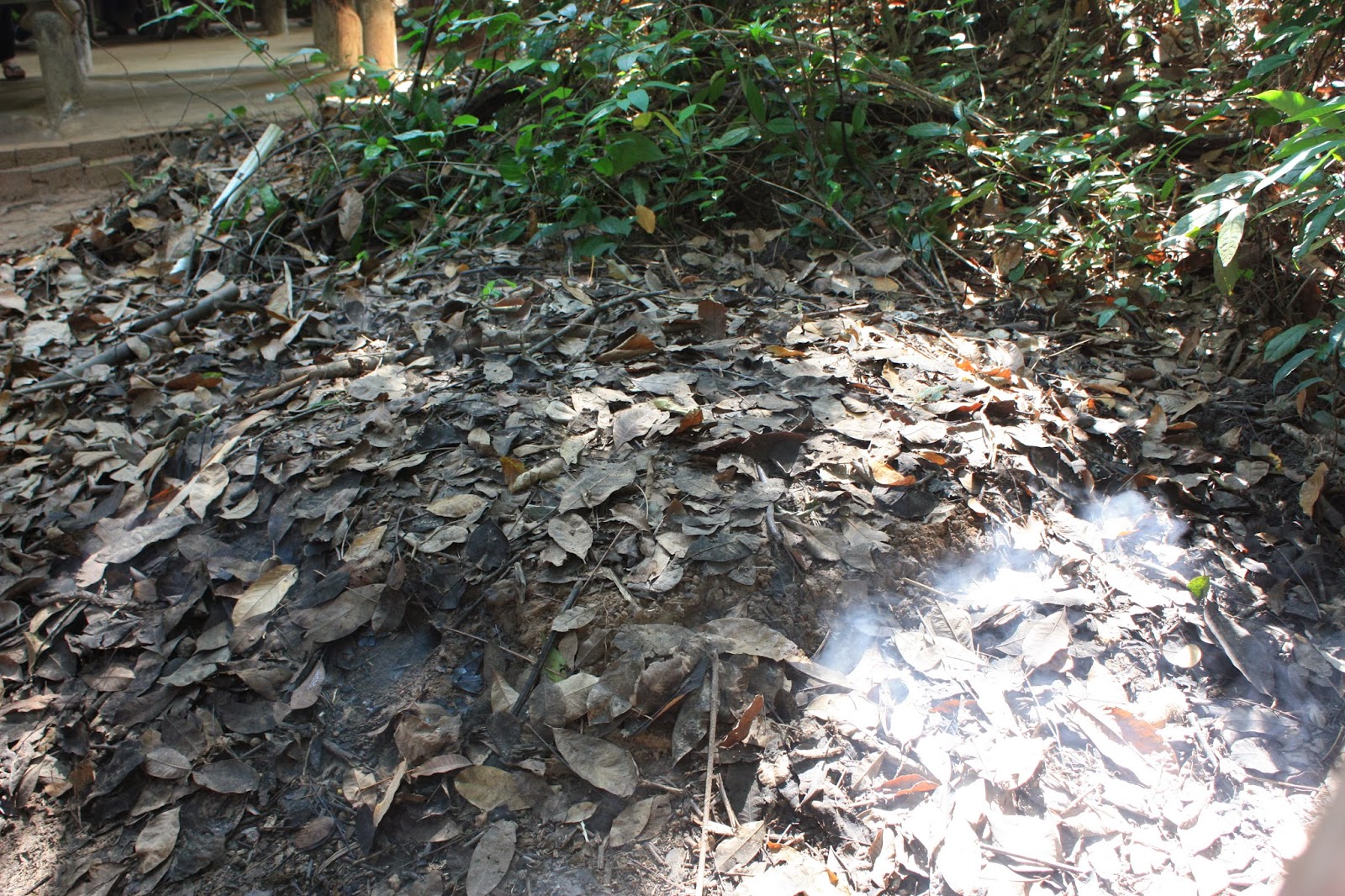
After the temple, we walked to a market that is similar to the ones in Thailand, where everything, from food to clothing to flowers to coffee and tea to souvenirs, is sold. At this point, I have to say something about the Vietnamese people I've encountered so far: They are harsh and tough in mannerism, are very impatient, get angry easily, and seem pretty deceitful, untrustworthy, and sneaky. They also seem...desperate. Everywhere we go, it seems everyone is trying to part us from our money. If they are not doing so by being deceptively nice, they are demanding it outright. Now I know why so many travelers to Asia think the Thai people are some of the nicest in the world and love them so much. They are so friendly and sweet. Coming to Vietnam has given me a new appreciation for the Thai people. I miss them!
In Ho Chi Minh City, everyone in the service and sales businesses was extremely aggressive; I've never encountered anyone quite like the people here. Taxi drivers are completely opposite from those in Thailand -- the minute you step outside, they are after you to drive you somewhere. Waitstaff come out and chase after us to get us to eat at their restaurants. Vendors at the market were shoving their menus and products in our faces and grabbing us to get our attention. If we ignored them, they kept after us, trying to change our minds. If we declined politely, they kept after us, trying to change our minds. So I ended up having to raise my voice and be forceful with many people! It was frustrating that I had to be "mean" to get people off my back. Having to be alert and on the lookout for that at all times makes it very hard to relax and is very draining. Because of the super-aggressive people all vying for our business, we weren't able to linger and browse at a leisurely pace and not for as long as we had wanted.
 |
| Walk toward the light! |
Following the park, we went to the Reunification Palace, where the South Vietnam president lived and worked during the Vietnam War and where North Vietnamese Army tanks crashed through its gates in April 1975 during the fall of Saigon, thus ending the war. It was an amazing place, both grand in design and devastating in history. There were beautiful reception and conference rooms, with the President's and First Lady's own reception halls, a shooting range, auditorium, offices, and situation room. The furniture and chandeliers were exquisite. There were creepy and miserable-appearing underground mazes of bunkers, offices, and bedrooms where the President, his family, and staff lived and worked while hiding from the bombings and attacks. We learned a lot about the travesties of the Vietnam War, which is called the American War here in Vietnam. It was both tragic and fascinating, especially with regard to the psychology of war.
Signs of communism against the backdrop of European architecture were everywhere along the way. I tried to take a picture of one of the ubiquitous guards posted at every official building, including embassies, but he stopped me. Considering that he was carrying an AK-47 on him, I decided not to go against his wishes.
After going through the place, I was completely depressed. But once outside, it was again beautiful, sunny, and serene, with a wonderful playground full of kids running around, laughing, and playing. There also was a cute cafe/restaurant where we had a delicious lunch. A bit surreal and quite a contrast from the inside of the building.
We also visited the Ho Chi Minh City Museum, an old building with beautiful architecture, and learned a lot about the culture and history of Vietnam. My son loved seeing all the wartime planes and tanks up close. As you can see, I was more interested in the building itself than the exhibits. Afterwards, we walked a little bit more around the city to take in the sights and sounds of the holiday season, which were everywhere we went.
 |
| The opera house, where we saw a wedding party getting its pictures taken. |
The next day, Christmas Eve, instead of celebrating the upcoming holiday, we took a tour of the Cu Chi tunnels. They are part of an extensive system of underground tunnels covering at least 120 kilometers in area and connecting to the Reunification Palace. They were used not only as hiding spots, but also as communications and supply routes, hospitals, food and weapons caches, and living quarters, during the Vietnam War. The tunnels were completely dark (dim lights have been added to parts of them for the tourists). Some parts of the tunnels were extremely small, to the point where my small-sized son had to crawl on his hands and knees. Imagine having to get through them with all the weapons and equipment. Others, where people lived and cooked, were wider.
We had an excellent tour guide who was a young man in his early 20s during the Vietnam War. He received a scholarship from the government during that time, so he escaped the war by going to the U.S. and traveling all over the country. One of his professors from Saigon University eventually became the Prime Minister after South Vietnam was defeated. It was both fascinating and horrifying to see some of the places where the war took place; a pretty intense experience even after so many years.
He explained to our group that Saigon was originally the capital of South Vietnam, and was renamed Ho Chi Minh City after it fell. Now Saigon is but a smaller district in Ho Chi Minh City. Ho Chi Minh City is the largest city in Vietnam, and it alone is home to four million scooters/motorcycles.
Our group consisted of us, a couple of Russian women, a woman and her five daughters from Sweden, and a brother and sister from Australia. The Australian woman also happened to be an international school teacher and had lived and taught in Thailand (north of Bangkok) for a year. She also has traveled to and lived in Mexico and South America. She's now in Dubai and hates it! It was so cool to meet people from all over the world.
On our way there, our shuttle took a break at a factory that was established to help those with disabilities and birth defects due to Agent Orange to make a living. The factory is where they work to make handmade artwork (mixed media of paint, eggshells, and seashells with lacquer), vases, and bowls to sell and support themselves. Their work was amazing and beautiful.
On our way to Cu Chi, our tour guide pointed out people on the roadside in the countryside selling rats...for eating!! Our tour guide (half) joked that the Vietnamese people are honest about what animals they serve (rat, dog, cat, etc.), and they don't call something "dog" (like the Americans do with their hot dogs) unless it's really dog!
At the tunnels, we were first shown an exhibit of the guns used during the war and pictures of life in the tunnels. There was even a picture showing an operation taking place in the tunnels!
Then we walked through the jungle and got a look at the different tunnels and booby traps. The booby traps all had sharp spears sticking up (to better kill whatever or whomever fell, my dear). There was a little tunnel/hiding spot that visitors could try to get into. It was tiny! My husband tried it and could barely fit. Our tour guide wasn't sure what the anthill-like thing was. He said it could be a real anthill or termite nest, or it could be man-made for ventilation from inside the tunnels. There were also big craters throughout the jungle from bombs dropped by the Americans and a few tanks left behind by the Americans.
A guide explained the tunnel system to us using a model of a portion of the system, with all the visitors sitting inside a tunnel that had been opened up. The part of the tunnel that is straight down on the left side of the model is a water well (see picture). We also were shown a film about Cu Chi, the tunnels, and the American (Vietnam) War, made in 1967, so it was total propaganda and extremely anti-American. The film repeatedly called the Americans "crazy devils," and talked about how they tried to take away and destroy Cu Chi and were eager to kill the Vietnamese people, but that the Vietnamese people would be victorious due to their resilience and teamwork and the Liberation Army. The film showed farmers and peasants digging tunnels and trenches, shooting guns at the enemy, and doing other war-related activities, all while wearing big smiles on their faces. It was very awkward for us as we were the only Americans there.
Various types of booby traps and door traps for killing the enemy (i.e., the Americans) and animals to eat.
We also passed by a shooting range where visitors could try their hand at shooting a gun. No one in our group was interested, so we didn't get to take a look there. But even being nearby, it was really loud and we could hear the gunshots. My son was actually scared and couldn't get away fast enough. We then watched a demonstration of rice-paper making and saw rice papers drying in the sun.
Yes, these are the exact type of rice paper used to make spring rolls.
Yes, these are the exact type of rice paper used to make spring rolls.
During the Vietnam War, the Vietnamese people made combat sandals out of tire rubbers as there was plenty of those around. Here, someone is making and selling them. We picked up a pair and felt how heavy they are!
We also got a chance to go inside a tunnel ourselves. It was very difficult. The steps were tiny and very steep. And it was very dark inside except for a tiny light lighting the way. I take it the Vietnamese soldiers didn't know about claustrophobia. We had to crouch down to get through, and even my son could barely fit. Within a minute or two, my son was wanting to get out, so we took a shortcut and got out before everyone else.
A lookout, I assume.
Our tour guide broke off one of the leaves on this covering and tried to light it on fire five times. He said those leaves were from another part of Vietnam and had a natural chemical on them that prevented them from being burned. He told us the name of it in Vietnamese, but he said he has not been able to figure out what it's called in English because those types of leaves don't exist outside of Vietnam. He also wouldn't allow us to take a picture of him trying to burn the leaf as he wasn't allowed to do that, and he did it only for us, wink wink, nudge nudge. I wonder how many groups of gullible tourists he's said that to....
A plant called "touch-me-not" that is touch-sensitive. It closes on itself when someone touches it. I remember how I loved to play with these plants as a little girl in Taiwan, where it also grows, but I can't, for the life of me, remember what it's called in Chinese. It was so cool to see that plant again after so many years.
As I mentioned before, the tunnels were used not only for combat, but also as living quarters, where cooking and dining were done. This is the ground cover above tunnel space that was used for cooking. There are some very discreetly placed holes on the sides of this pile of leaves, so the smoke from cooking came out from the sides and not up in the air where it could be detected. Also, to cover up the smell of cooking, cow manure was used.
During the war, tea and food were hard to come by. The Vietnamese soldiers boiled this plant to drink as tea and cooked up tapioca roots, dipped in peanut crumbs, to eat. We were treated to the tea and tapioca roots at the end of our tour. Both were actually quite delicious!
A final display: the types of shells that were dropped from American planes.
Overall, it was an excellent, hands-on history lesson, but it also was a pretty tough tour, seeing all the blood shed and devastation from the war. Definitely not your typical, relax-on-the-beach-with-a-drink-in-hand kind of vacation.






























































































































No comments:
Post a Comment